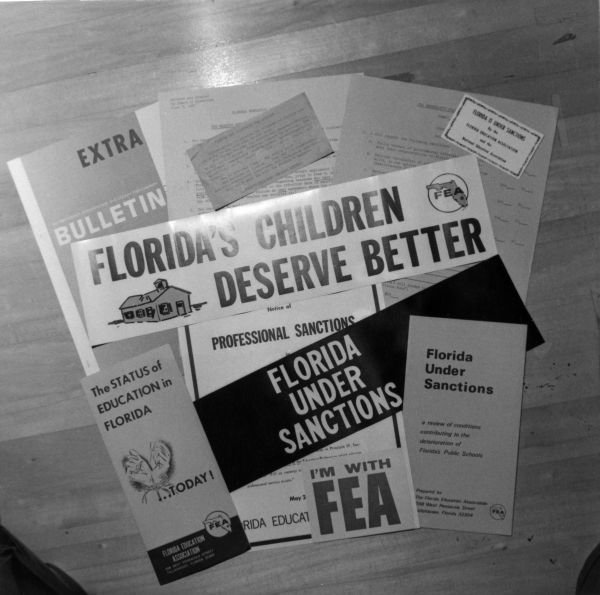Throughout the 1960s, American public workers were fed up with their working conditions. Across Florida, teachers were long frustrated with underfunded schools and low salaries, made worse by state leaders’ push to run education like a business. In a 1967-68 special session, the Legislature further targeted teachers and their primary union, the Florida Education Association (FEA). The 1968 law stated that if “substantial numbers” of teachers strike or walk out, counties can deem this a public emergency and hire workers without teaching certificates to replace them. The 1968 constitution also doubled down on its anti-strike stance of the 1950s by adding, “Public employees shall not have the right to strike” to its right-to-work law.
In early 1968, as many as 35,000 teachers participated in the first statewide teacher walkout in the U.S. Nearly a third of the state’s school districts shut down as a result, with most walkouts occurring in populous Tampa and Miami. Black teachers joined in the movement to condemn funding disparities and de facto school segregation. The state’s Black teacher union had merged with the FEA the year prior, integrating the union and broadening its power.
The powerful business lobby, Associated Industries of Florida, urged Governor Claude Kirk to fire all teachers participating in the walkout. This did not happen, though many teachers were not welcomed back after the walkout ended three weeks later. Although teachers did not achieve many of their aims — including significant boosts in public education spending — the FEA President said: “The walkout was not in vain.” For example, teachers maintained educational funding the governor originally threatened to veto and secured a resolution that required county school boards to “professionally negotiate” with teachers.
This was not collective bargaining in the strictest sense because that process involves workers negotiating employment terms through their unions (versus individually or in a less organized manner). Nevertheless, it gave Florida’s teachers some power and set the stage for collective bargaining rights for all Florida’s public workers, which would come in 1974.
For more information about the 1968 Teacher Walkout, visit other policy areas of The Florida Timeline:
